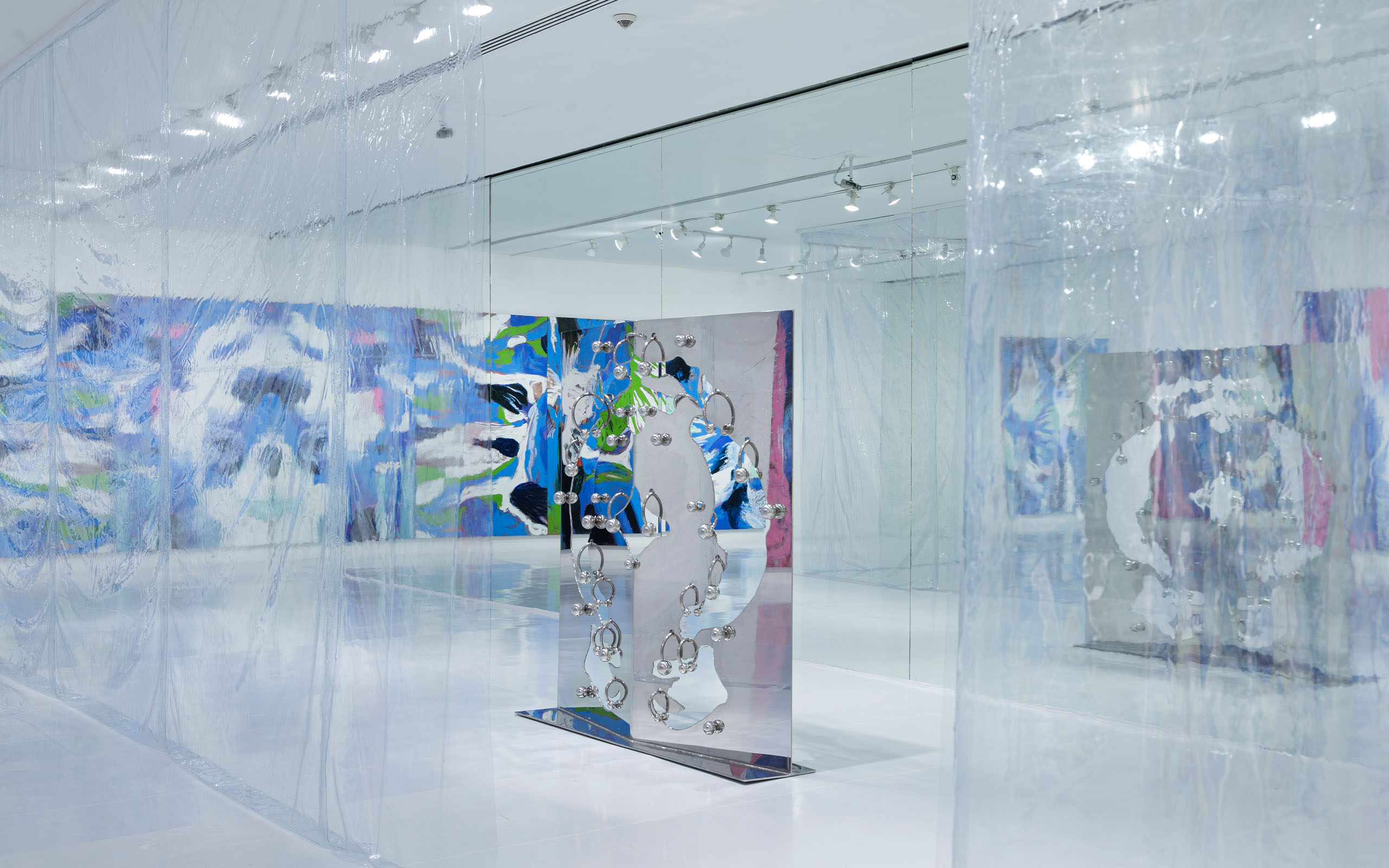







OJOS OBSIDIANOS [Obsidian Eyes] | Donna Huanca
From February 4th to July 16th, 2023
Curator: Maya Renée Escárcega
Sala Juan Soriano
Our skin protects what we carry within us from the hostility of the world. With its multiple layers and mixture of oils, chemicals, and minerals, it safeguards the body from pain, heat, pressure, and illness. The fat contained in the deepest layer of the skin maintains body warmth, while our “real skin” lends us strength and support. Physical sensations are made possible by that exterior layer, which, in addition to containing pigment and weatherproofing, is able to remember in the future the trauma of the present.
In western Mesoamerica, obsidian from the foothills of the Tequila Volcano was used by the Teuchitlán Tradition to make mirrors and protection artefacts, while in our own day scalpels made of this volcanic stone are used to provide care to the human body in surgical procedures.
Donna Huanca’s artistic practice can be understood in a similar way: as a series of layers that offer care, trust, and safety to the models with whom she collaborates. In the models’ absence, the works continue to evoke their energy. By doing so, her practice provides a remedy to the “male gaze” and the “pedagogy of cruelty” that convert living beings into objects.
Huanca begins her work by offering meditation experiences to models during performance sessions. Although the models are not physically present in the galleries of the MAZ, the space retains the echoes of their bodies through imprints stored in memory: sounds, smells, visual images, and graduated tactile vibrations.
The works in the exhibition are interconnected and interdependent. The paintings emanate from the performances and the sculptures from the paintings. The pigments used to paint the skin of the models come from the sculptures, which are inspired by natural minerals and rock formations.
Throughout the history of art, the slow drying of oil paint has allowed painters to create the details of their figures in stages, by means of progressive layers. Huanca’s oils, which by their arrangement as polyptychs assume the dimensions of murals, and give off a particular odor, remain moist for longer than usual, similar to the cosmetic formulas designed to be applied to the skin. And that is what happens, in a way. The artist paints the skin of her models during the performance sessions, then photographs it, prints the photos and paints these with her hands, skin-to-skin, in vibrant gestures.
Smell is yet another sensorial layer. Plastic and oil paints have an essence that distils familiar, but also divisive, sensory evocations. A fetishistic attraction to latex, or a feeling of repulsion toward it, seems to manifest itself rapidly in every person.
The artificial landscape, with its refractive and reflected streets, is arranged in such a way as to provide a refuge for the energies that Huanca embraces and collaborates with. As a sort of labyrinth, it disorients, but it also provides a safe space in which to navigate and explore, through the senses, the projection of a future where warmth, touch, community, interconnection, and the interdependence of bodies with the natural world are cherished and cultivated.
The metalized totemic sculptures function as shelters, as resting lairs, as hideouts from the intensity of the gaze. By being reflected, the bodies that are visually present in the space are dissected and camouflaged. The gaze undergoes a sort of metamorphopsia owing to the antiseptic layer, whose clarity is apparent, but not crystal-clear, as it distorts the other living beings, the sculptures, and the paintings. Moreover, its own reflection is captured by the plastic. There are all of these layers between one person and themselves, between us and ourselves. The cyborgs of Donna Haraway nod: “Why should our bodies end at the skin, or include at best other beings encapsulated by skin?”
Maya Renée Escárcega

